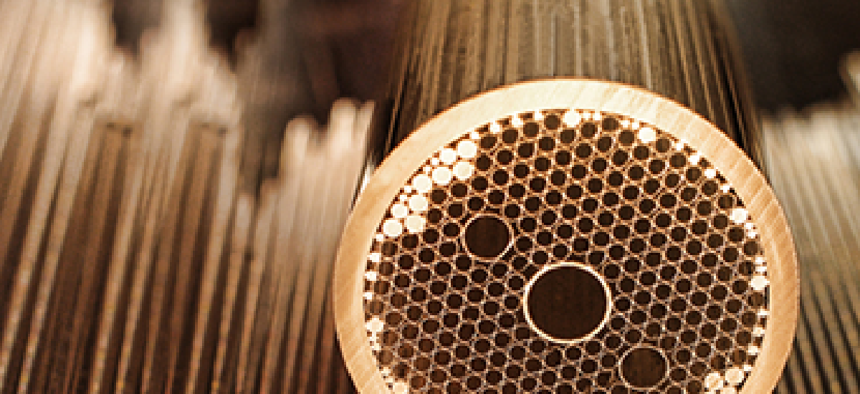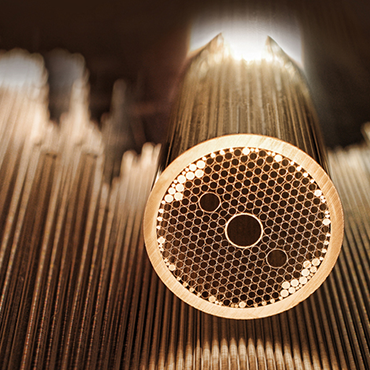DARPA lights up fiber optic technology

Hollow-core fiber optics allow light to travel faster through the pipes.

This hollow core in DARPA's fiber-optic line allows light to travel faster than it does through traditional glass fibers.
Thanks to research into fiber optical development by the Defense Advanced Research Projects Agency, the military will soon be able to harness light to travel up to 30 percent faster for key networking projects.
Whereas light travels through glass in traditional fibers, the hollow core of this new fiber allows light to travel through channels of air at a substantially faster rate.
"DARPA's unique spider-web-like, hollow-core fiber, design is the first to demonstrate single-spatial-mode, low-loss and polarization control—key properties needed for advanced military applications such as high-precision fiber optic gyroscopes for inertial navigation," a DARPA announcement said. Fiber optic gyroscopes are used by the military as sensors.
While hollow-core fiber has long been available from foreign suppliers, DARPA said that its Compact Ultra Stable Gyro for Absolute Reference (COUGAR) program has brought production possibilities to the United States -- and developed the design "to a level that exceeds the state of the art."
DARPA said its product is the first hollow-core fiber to include a single-spatial mode. That means light can take only a single path, enabling higher bandwidth over longer distances. It's also low loss, so that light maintains intensity over longer distances. DARPA's product also provides polarization control, meaning the orientation of the light waves is fixed in the fiber, which is necessary for applications such as sensing, interferometry and secure communications.
Honeywell International Inc. led DARPA funded researchers.


